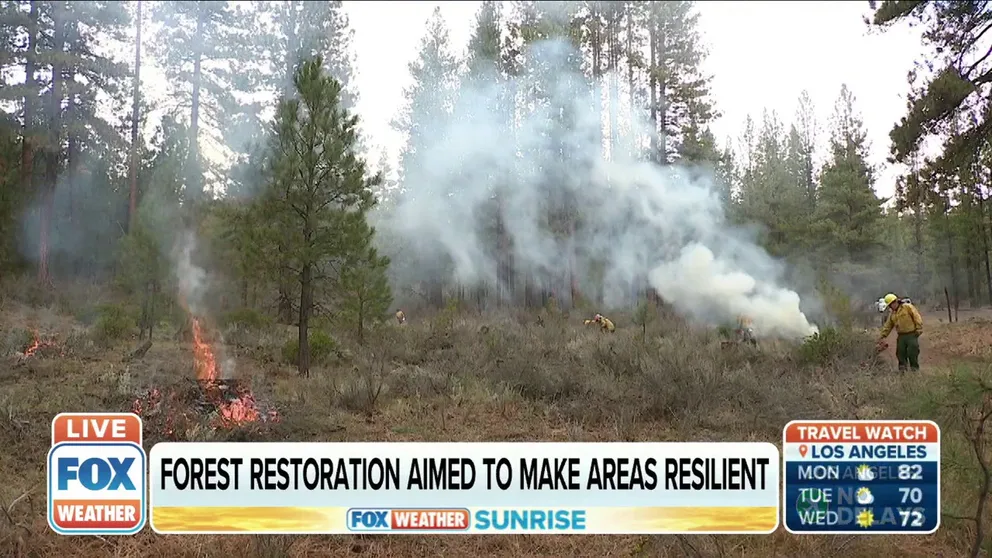Oregon forest restoration efforts aim to make areas more resilient to surviving fires
CHILOQUIN, Ore. – President Joe Biden said during his UN Climate Change Conference speech that the U.S. will restore 500 million acres of forestland by 2030. But what is forest restoration, and what does it aim to accomplish?
In southern Oregon, forest restoration efforts aim at making these areas more resilient to surviving wildfires. That means crews will go in and clear brush and smaller trees that have choked up our forests over the last 100 years.
For the native people who’ve lived in these forests since ancient times, it’s sacred.
Forest restoration aimed to make areas resilient to wildfires
FOX Weather Correspondent Max Gordon went to southern Oregon to see how crews are working to make forests more resilient to surviving fires.
"We were the first best stewards of the land. We were the aboriginal stewards of the land," Belinda Brown, Lomakatsi Restoration Project Tribal Partnerships Director, said. "The work we do starts with the ceremonies, starts with the prayers … Starts with people coming together in a good way."
For many tribes, taking care of the forest was a way of life.
"Aboriginal fire was something that we used all the time as a land management tool," says Brown.
And now that practice is rekindling in modern forestry.
"It really is coming backfill circle to the aboriginal people have the answers," Brown explains.
The Lomakatsi Restoration Project is a non-profit that does forest restoration work in southern Oregon and northern California.
"Forest restoration means coming in and ecologically thinning the forest," explains Marko Bey, Lomakatsi Restoration Project Executive Director.
Crews come in with chainsaws to clear away the thick brush and small trees that’ve built up over the past century due to well-intentioned fire suppression techniques.
"Forests have grown really dense, and with a changing climate, we’re having what you call mega-fires. Fires like we’ve never seen," Bey said.
It’s a change in tactics from agencies like the U.S. Forest Service.
"Fire hasn’t played that role in forests like it used to," Judd Lehman, U.S. Forest Service District Ranger, said. "Where it keeps the brush down, keeps the small trees away. So, we’ve had that realization, and it’s really set us up where our main goal is getting rid of those excess fuels around communities."
It’s work that takes place now in the late fall and winter before the next fire season.
"If a wildfire starts in the middle of August when it’s 100 degrees out, you don’t really have a lot of options, so there’s a lot of work. We need to get it done as soon as possible," Lehman says.
And today, it is work done by a crew made up entirely of Native Americans -- restoring an ancestral Klamath village site along the Sprague River.
"The Earth is our mother, is our sustenance, and we need to take care of her as such," Brown says.
A people returning to their roots with work that’s equally good for the forest as it is for the soul.
Brown adds that it’s "Not just restoring the land, but restoring the community, and healing the people."
The forest clearing happening today will be protecting the nearby town of Chiloquin from severe wildfires.
It’s also an opportunity to provide good-paying jobs in an area that has struggled with the decline of the timber industry for several decades.
